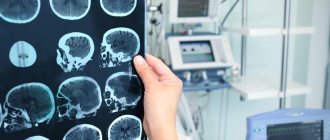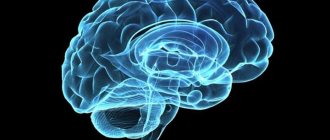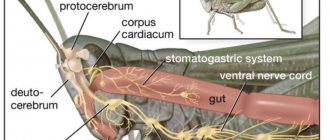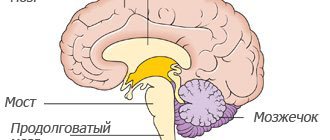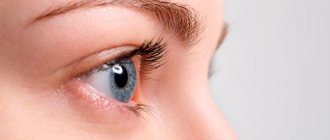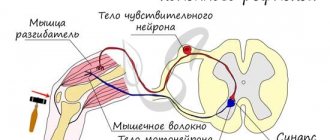Infections that occur in various parts of the central nervous system can be successfully treated by neurologists at our clinic. We will carry out diagnostic measures using the most modern equipment to obtain an accurate diagnosis. The experience of our neurologists allows us to effectively cope with many diseases of the central nervous system, no matter what infections they are caused by: viruses, bacteria, fungal infectious agents, protozoa. We will not only cure the disease, but also restore anti-infective immunity.
The main thing about neuroinfections
The infection can affect any part of the central nervous system: brain, spinal cord, peripheral nerves. Infectious agents can enter through various lesions of the central nervous system. This could be a skull fracture, penetration through the blood or nerves, or other means. The most dangerous are neuroinfections of the brain.
Usually, with good immunity, the central nervous system is completely protected from the penetration of infectious agents (thanks to the skull, spinal column, meningeal membranes). But if the immune system weakens, then due to the penetration of infection (helminthic parasites, fungi, bacteria, viruses) into one or another part of the central nervous system, various pathologies can arise.
Infections are divided into primary and secondary. In the former, an initial infection of the central nervous system occurs; in the latter, infectious agents enter the central nervous system from other foci. Neuroinfections sometimes act as a complication of certain infectious diseases (influenza, tuberculosis, syphilis, herpes, etc.).
There are many separate types of infections of the central nervous system, but doctors distinguish lesions of the membranes of the brain (meningitis) and the spinal cord (myelitis), infection of the substance of the brain (encephalitis) or substance of the spinal cord (encephalomyelitis), inflammation of the roots of the spinal cord (radiculitis), damage to the peripheral nerves (neuritis). ). Our neurologists will provide assistance with a variety of types of neuroinfections, such as:
- Meningitis.
- Encephalitis.
- Leptospirosis.
- Myelitis.
- Rabies.
- HIV.
- Tetanus.
- Borreliosis, tick-borne encephalitis (the infection is transmitted by ticks, the pathogen, when bitten by a tick, enters the bloodstream and then into the central nervous system).
- CNS lesions due to measles, rubella, mumps.
- Infection with herpes group viruses (herpes, cytomegalovirus, etc.).
- Viral hepatitis.
- Parasitic diseases of the central nervous system.
- Toxoplasmosis.
- Leptospirosis.
- Chlamydia.
- Mycoplasmosis.
- Neurosyphilis.
Differentiation of signs of infectious diseases of the nervous system
Infectious diseases of the nervous system, in PDF files with descriptions of the forms of the disease, are classified depending on the lesion. Depending on which component of the nervous system is negatively affected, the following forms of the disease are distinguished:
- myelitis is characterized by damage to the spinal cord. Most often, the infection enters the body through the blood. Specific manifestations of myelitis are pain in the limbs;
- meningitis occurs in patients with inflammation of the meninges. A characteristic manifestation of this form of infection is a severe headache. General manifestations of the infectious process during meningitis can be supplemented by tachycardia, skin rash, muscle soreness;
- Encephalitis is characterized by infection of the brain. This condition is characterized by both general symptoms and specific manifestations: convulsions, impaired consciousness, deep coma.
Comprehensive diagnostics carried out at the Yusupov Hospital allow specialists to determine which part of the nervous system is damaged by infection. Infectious diseases of the nervous system, neurology contains a full description of which, can be successfully treated at the initial stage, when a person has no signs of cognitive impairment.
Symptoms of central nervous system damage
Symptoms of diseases vary widely, depending on the type of infection. Movement disorders, muscle weakness, paralysis, and tremors occur. There may be disturbances in speech, coordination, and tactile sensitivity. Symptoms also include headaches, back pain, and limb pain.
Diseases can manifest themselves as fever, convulsions, excitability, epileptic seizures, nausea, vomiting, fatigue, drowsiness, disturbances of consciousness, behavior and mental activity. At the first such signs, you should consult a doctor immediately.
Infectious diseases of the nervous system: general characteristics
Infections of the nervous system are a broad group that includes many diseases that are classified on various grounds. Infectious diseases of the nervous system can develop when pathogenic microorganisms enter the body through airborne droplets, lymphogenous, hematogenous and contact routes.
Neurologists at the Yusupov Hospital carry out comprehensive diagnostics, during which it is possible to establish not only the method of infection entering the body, but also to identify the source of the lesion. During an infectious process, patients come to the Yusupov Hospital with complaints of the following symptoms:
- intense headaches;
- increased sensitivity to sounds and light;
- nausea and dizziness;
- increase in body temperature;
- convulsions and paralysis;
- short-term loss of consciousness.
The course of infectious neurological diseases varies; it depends on the degree of damage to the nervous system, the body’s resistance and the timeliness and adequacy of treatment measures. Neurology studies infectious diseases of the nervous system in sufficient detail, which describes in detail the manifestations of various forms of pathology, methods of their diagnosis and treatment.
Infectious diseases of the nervous system are briefly described in materials used by neurologists in clinical practice. Without special knowledge, a person who has signs of an infectious process in the nervous system will not be able to independently determine the problem.
Diagnosis of CNS infections in the clinic
Effective treatment of neuroinfections is only possible with an accurate diagnosis. Diagnostic testing may include:
- Examination by a neurologist.
- General urine and blood tests, blood biochemistry.
- Laboratory tests that allow you to identify the pathogen and assess immunity (determination of antibodies to infectious pathogens, PCR diagnostics, cultural cultures). It is a laboratory assessment of immunity that can help determine how the infection entered the central nervous system.
- Electroneuromyography is performed to determine infections of the spinal cord and peripheral nerves.
- Ultrasound diagnostics.
- CT scans of the brain or spinal cord can identify neoplasms and hemorrhages, that is, distinguish infectious causes of central nervous system damage from non-infectious ones.
- Lumbar puncture.
Viral and prion infections
There are a huge variety of viruses that cause acute encephalitis (mosquito, tick-borne, epidemic), in general they differ in vectors and geography of distribution.
Focal symptoms occur against the background of “general infectious manifestations”, these are:
- paresis
- respiratory muscle paralysis
- paralysis of limbs,
- paralysis of facial muscles, etc.
Rabies and slow infections can pose a huge danger, and therefore special attention is paid to them.
Rabies. Almost all mammals can suffer from rabies. The source of infection is usually dogs, wolves, foxes, and it is through the bite of infected animals that this dangerous infection is transmitted to humans. Symptoms:
- hydro and aerophobia
- convulsions
- attacks of aggressive behavior.
Emergency vaccination after a bite is the only way to recover, so waiting for the first symptoms of the disease to develop is prohibited, since this can only indicate that the person can no longer be saved.
Slow infections are viral neuroinfections that have the ability to remain asymptomatically in the human nervous tissue for a long time, with the subsequent development of the disease.
Scientists have identified four main characteristics that distinguish slow infections:
- unusually long (months or years) incubation period;
- slowly progressive nature of the course;
- unusualness of damage to organs and tissues;
- the inevitability of death.
The causative agents of the virus are rubella and measles. For reasons that are not entirely clear, these viruses can remain in brain cells after an illness and cause disease after 4 or more years. Both viruses cause panencephalitis with similar symptoms:
Personality changes with the development of dementia
Gradual paralysis of all striated muscles.
Unfortunately, even with treatment, the consequences of these neuroinfections are always the same - death.
Prions Prions are “proteinaceous infectious (particles).” Prions are defined as “a small proteinaceous infectious particle that is resistant to inactivating influences that modify nucleic acids.” In other words, prions are ordinary proteins of the body that for some reason (which is still unknown) they begin to behave “wrongly”.
There are four types of prion neuroinfections, and only one of them has a clear transmission mechanism. In some tribes of Papua New Guinea, cases of kuru-kuru were often reported due to the previously widespread ritual cannibalism of eating the brains of relatives. Prions cause spongiform encephalopathy, which means the brain turns into a sponge.
Treatment of neuroinfections
Based on the diagnostic studies performed, the clinic’s specialists will choose intensive therapy aimed at:
- Elimination of the causative agent of the disease. For this, the doctor prescribes the most modern antibiotics, antivirals, interferons, and immunoglobulins.
- Eliminating the source of infection. For example, if the source is in the maxillary sinuses, it is necessary to put them in order.
- Restoration of anti-infective immunity. For this purpose, the neurologist will prescribe special medications.
- Stimulating the functions of affected areas of the central nervous system with the help of effective medications.
Multiple sclerosis
The best known autoimmune disease is multiple sclerosis (MS). It is a chronic inflammatory demyelinating disease with axonal damage to the central nervous system. The cause of MS is unknown, but the success of immunosuppressive treatment using disease-modifying drugs has suggested an autoimmune pathogenesis.
Common symptoms of MS are visual disturbances, numbness, concentration problems, fatigue, speech problems, coordination problems, spasticity, urination problems, sexual problems, swallowing problems, and double vision. However, today modern drugs for the treatment of multiple sclerosis make it possible to well control the course of the disease; moreover, the earlier the diagnosis is made and therapy is selected, the more successful the treatment is. On average, 80 out of 100 patients remain functional ten years after the onset of the disease.
Forecast.
It should be kept in mind that viral meningitis is an acute and self-limiting disease. But it can also mimic life-threatening CNS infections that are potentially treatable. It is especially important to consider the similarities between viral meningitis and partially treated bacterial meningitis, tuberculous and fungal meningitis. If CSF changes are not entirely characteristic of viral meningitis or the patient's response to treatment is atypical, then repeat lumbar punctures with CSF analysis should be performed within a relatively short period of time (until the clinical picture becomes obvious).
T. P. Harrison. Principles of internal medicine. Translation by Doctor of Medical Sciences A. V. Suchkova, Ph.D. N. N. Zavadenko, Ph.D. D. G. Katkovsky
Laboratory results.
During a lumbar puncture, CSF flows under increased pressure and is clear or slightly cloudy. The CSF usually contains 0.01-0.1*109/L cells. Sometimes cytosis increases to 3*109/l cells and higher. The cellular composition is more than 3/4 represented by lymphocytes and mononuclear cells. Polymorphonuclear cells predominate in the early stages of aseptic meningitis. CSF protein and sugar concentrations are usually normal. In rare cases, with meningitis caused by mumps and herpes simplex viruses, the sugar content in the CSF is reduced. If a patient has a low level of sugar in the CSF, then first of all it is necessary to suspect meningitis, the causative agents of which are bacteria, mycobacteria and fungi. Oligoclonal IgG bands may be detected in the CSF of patients with viral meningitis. For viral meningitis, it is impossible to identify the causative agent of the disease in preparations prepared with Gram staining and ink; Cultivation of bacteria and fungi gives negative results. Although some viruses (such as mumps virus) can be cultured relatively easily from CSF, in most cases of viral meningitis the pathogen cannot be isolated from CSF. The number of leukocytes in the blood is usually normal, but leukopenia is detected in 30% of patients.
Specific virological diagnosis is carried out using serological tests in the acute stage of the disease and the recovery period, and attempts are also made to isolate the virus from feces, urine and rinsing water. It is not possible to isolate the pathogen from the blood.
Differential diagnosis.
Viral or aseptic meningitis syndrome can be caused by various contagious and non-contagious pathogens. Most often these are picornaviruses, togaviruses, herpesviruses, paramyxoviruses and arenaviruses. The list of non-contagious infectious causes of aseptic meningitis syndrome is also wide. It includes intracranial infections localized near the membranes of the brain (otitis media, mastoiditis, vertebral osteomyelitis); brain abscess; partially treated bacterial meningitis; fungal, rickettsial, protozoal and helminth infections.
In addition, there are rare neurological disorders in which CSF findings are similar to those seen in viral meningitis. These include: 1) Behçet's disease, characterized by uveitis, ulcerations of the oral and genital mucosa, and focal neurological symptoms; 2) Vogt-Koyanagi and Harada diseases, accompanied by uveitis, depigmentation of hair and skin around the eyes, loss of eyelashes and deafness; 3) Mollaret meningitis and 4) Lyme disease.
Non-infectious causes of aseptic meningitis include intrathecal administration of drugs and preparations for diagnostic procedures, as well as tumors located in close proximity to the ventricles of the brain or growing into the subarachnoid space. Cytological examination of the cellular composition of the CSF allows one to differentiate neoplastic infiltration of the meninges from viral meningitis. Systemic diseases, such as sarcoidosis, disseminated lupus erythematosus, infective endocarditis, can also be combined with aseptic meningitis.
Epidemiology.
Aseptic meningitis affects 9,000 to 12,000 people annually in the United States. People of all ages are affected, but more than 90% of patients are under 30 years of age. The peak incidence occurs at the end of summer. Most cases seen in summer are caused by picornaviruses, others by polioviruses such as Coxsackievirus and ECHO. Meningitis, caused by the mumps virus, is more common in winter and late spring. Persons of both sexes are equally often affected by enteroviruses, but meningitis of mumps etiology more often affects men, and the ratio changes to 2:1 or 3:1.
Etiology.
The term “aseptic meningitis” refers to a disease characterized by an acute onset, meningeal symptoms, fever, pleocytosis and negative bacteriological results. The disease is relatively benign, and subsequently, as a rule, recovery occurs quickly. With the advent of more advanced methods for isolating viruses and the use of new methods for cultivating other microorganisms, it became obvious that aseptic meningitis is a polyetiological syndrome. If this syndrome is caused by a virus, the disease should be referred to as viral meningitis.

